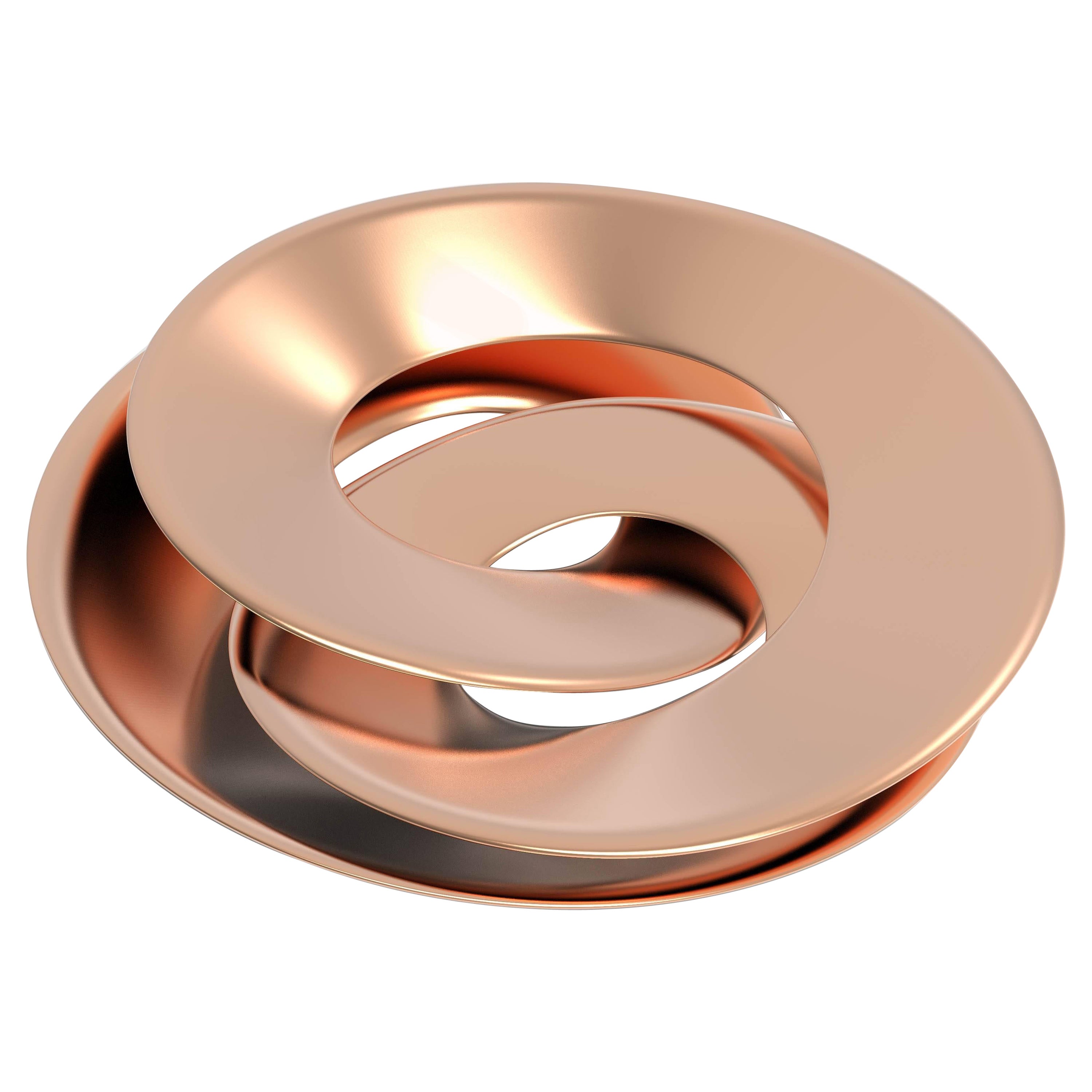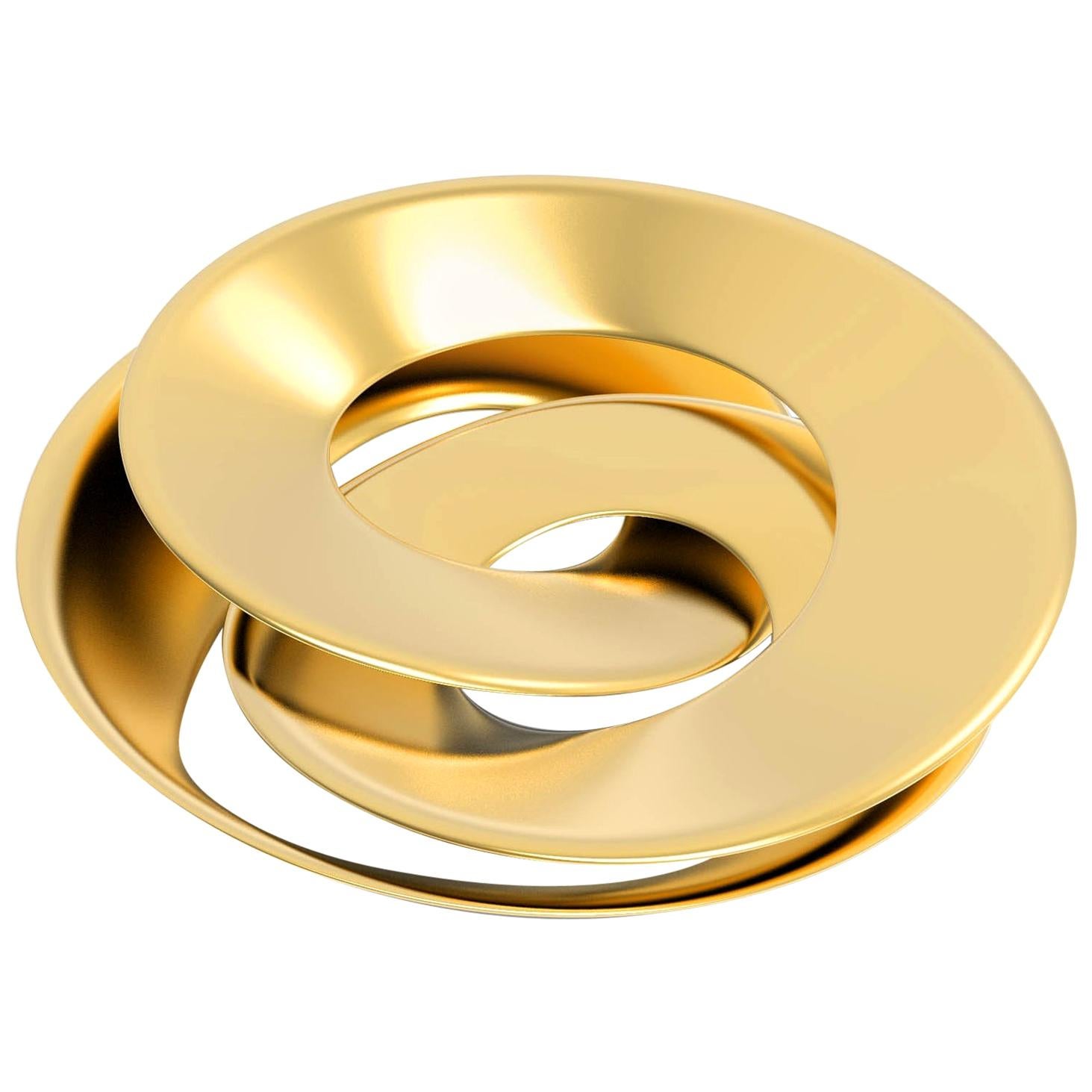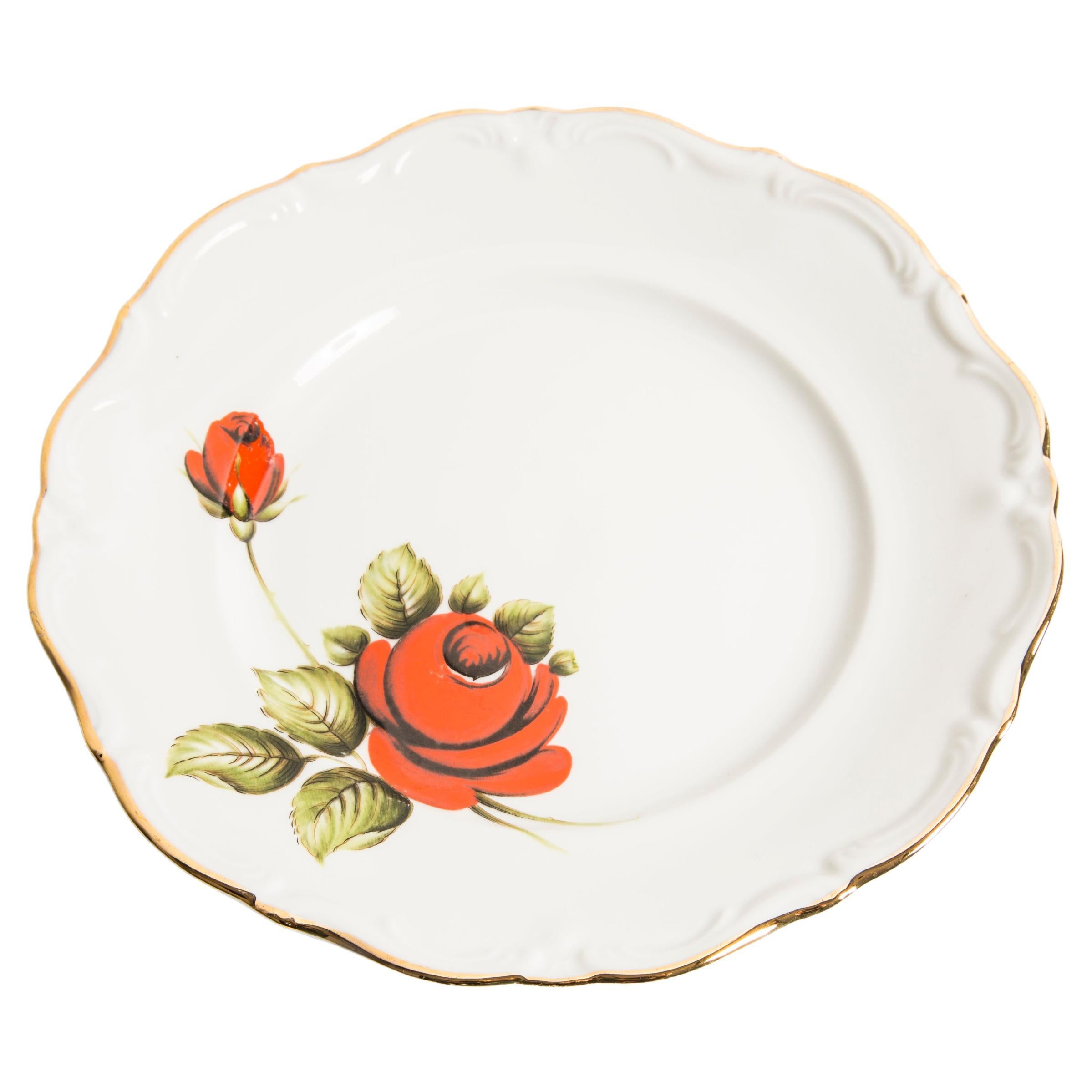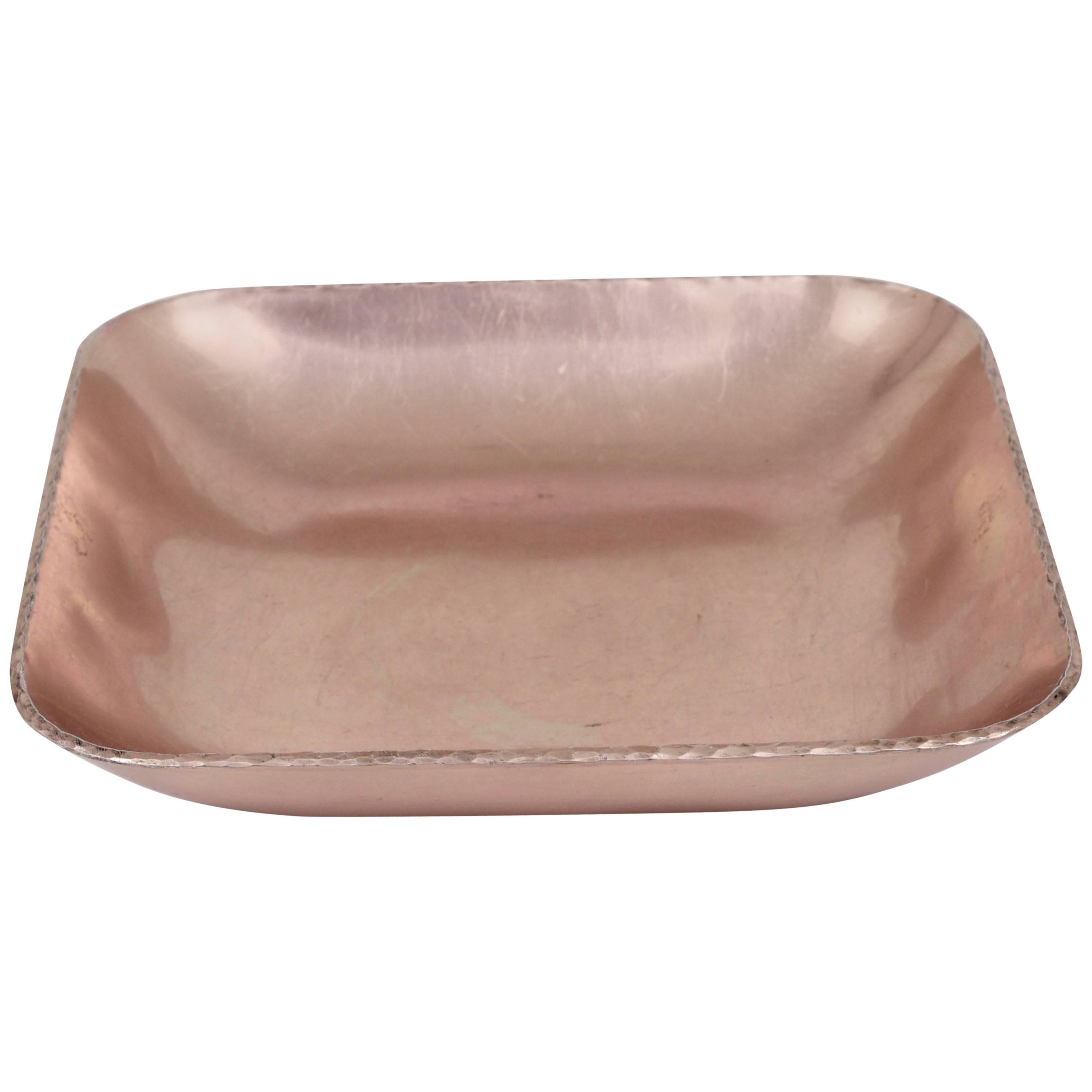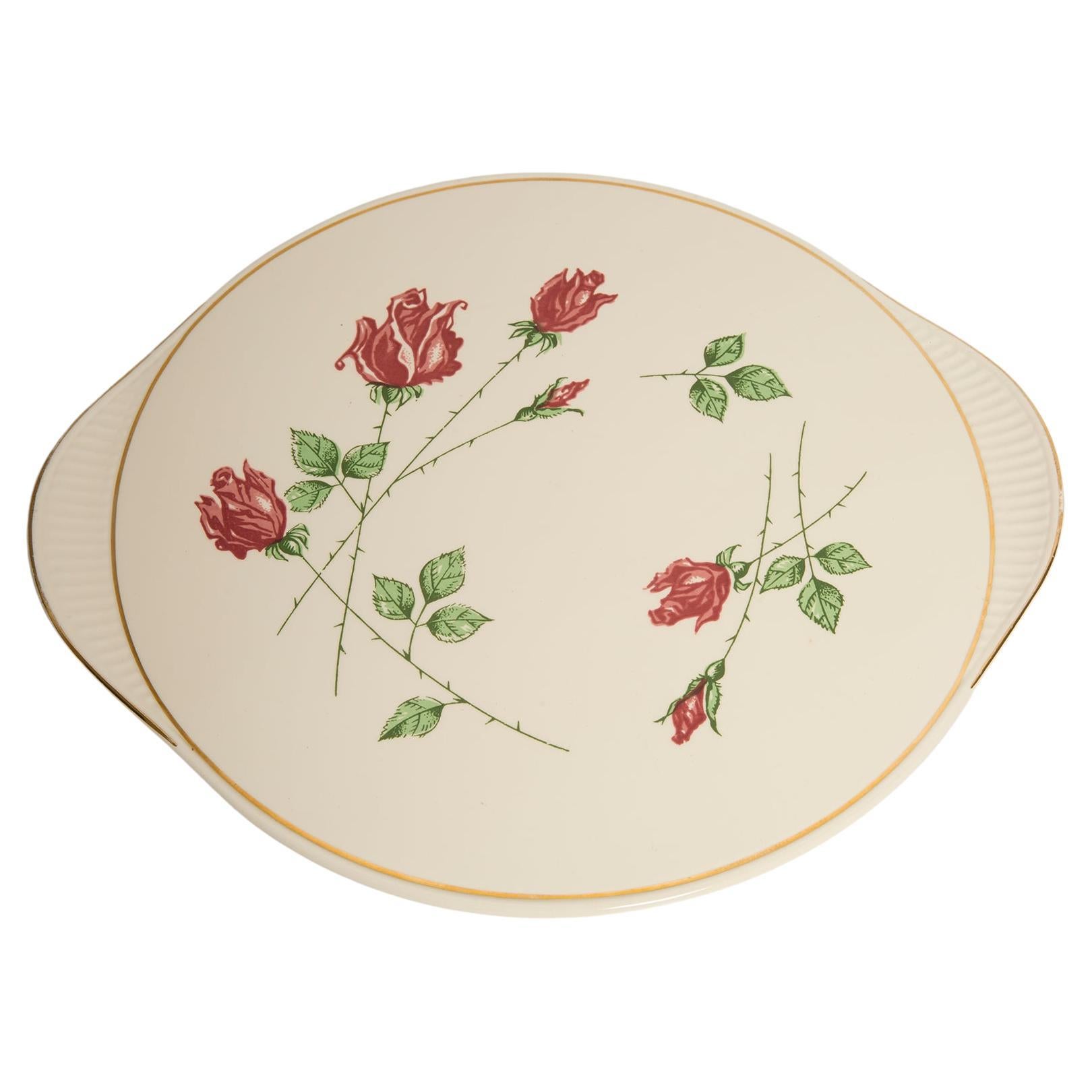Macedonia D50 Tray 'Rose Gold Plated Bronze'
About the Item
- Creator:Janne Kyttanen (Designer)
- Dimensions:Height: 5.91 in (15 cm)Diameter: 19.69 in (50 cm)
- Materials and Techniques:Bronze,Plated
- Place of Origin:
- Period:
- Date of Manufacture:2014
- Production Type:New & Custom(Limited Edition)
- Estimated Production Time:4-5 weeks
- Condition:
- Seller Location:Beverly Hills, CA
- Reference Number:1stDibs: LU107943343632
Janne Kyttanen
Finnish conceptual artist and designer Janne Kyttanen is known for inventing 3DTI, a technology capable of customizing almost any 3D-printed project. He has been a leader in 3D printing innovation since the 1990s, helping to revolutionize the way designers and artists approach manufacturing and design in the 21st century.
Kyttanen began his studies in 1996 at the Elisava School of Design in Barcelona before moving to Amsterdam to graduate at the Gerrit Rietveld Academie. After an introduction to 3D printing, Kyttanen began considering the world through wireframes and skeletal web-like structures. Kyttanen turned what he called a “bogus business plan” into an expert 3D printing design company called Freedom of Creation. Kyttanen later sold his company to 3D Systems. He remained as creative director from 2011 to 2016.
Whether fashion, fixtures or ping-pong tables, Kyttanen is responsible for several firsts in the world of 3D printing. In 2000, he created one of the world's first 3D-printed dresses and was the first to commercialize 3D-printed products on a large scale, including lights, shoes, phone cases and furniture. One large lighting fixture reportedly took him around six months to create.
Hyundai, Asics, Nivea, Nike, Phillips and L’Oreal were among the early adopters of Kyttanen’s technology, which led to multiple award-winning collaborations with numerous brands. The Cube, a consumer-level 3D printer, earned Kyttanen the American Technology Award as well as the Good Design Award in 2013. He created the first 3D-printed objects acquired by the Museum of Modern Art in New York. His work is now in the permanent collections of New York’s Fashion Institute of Technology Museum and Museum of Arts and Design, as well as Germany’s Vitra Design Museum.
On 1stDibs, find a collection of Janne Kyttanen tables, decorative objects, seating and more.
- ShippingRetrieving quote...Ships From: Kunshan, China
- Return PolicyThis item cannot be returned.
- Rollercoaster D50 Tray 'Rose Gold Plated Bronze'By Janne KyttanenLocated in Beverly Hills, CAAn infinite spiral created in flawless high polish gold, rose gold or silver. This piece measures 50cm in diameter.Category
21st Century and Contemporary European Platters and Serveware
MaterialsBronze
- Stool, Bullet Pouf, Gold-Plated Customizable by Janne KyttanenBy Janne KyttanenLocated in Beverly Hills, CAA study in pure minimalism, Bullet Pouf is a perfect cylinder created in high gloss precious metal. Change your viewpoint to reveal an unexpected beauty within. Bullet Pouf is a full...Category
21st Century and Contemporary European Abstract Sculptures
MaterialsGold
- Hairy Wild Man from Botany Bay Bowl Black by Trent JansenBy Trent JansenLocated in Beverly Hills, CABroached Monsters by Trent Jansen The vast majority of mainstream Australian mythology commonly used as a foundation for Australian identity is culturally exclusive. Both Indigenous myths, including post-colonial myths and precolonial dreaming stories, and non-indigenous Australian myths, including the bush legend, ANZAC tradition and convict legend, focus on the historical role that the race of authorship has played in building the nation. However, a contemporary understanding of Australian history acknowledges the contribution of both Indigenous and non-indigenous Australians in forging the nation, and the national identity which accompanies it. Instead of perpetuating the same exclusive national myths, perhaps Australians should adopt a national mythology that acknowledges this inclusive understanding of Australian history, a mythology that unites Australians of many backgrounds under a shared Australian identity. In his book on Australia’s Folklore of Fear, Robert Holden explores pre-colonial ideas of Australia as a Great Southern Land – an imaginary landmass conjured up to counterbalance the continents in the northern hemisphere, as far removed as possible from Britain, the center of the Christian world (Holden, 2001). Holden speaks of Australia as an imaginary world, occupied by unimaginable creatures and monsters. Holden is commenting in part on the mythical creatures that originated in both British and Aboriginal Australian folklore and were shared by the Aboriginal and non-Aboriginal inhabitants of Sydney during the early years of colonization. Stories of the yahoo, a creature that resembled a slender man, with long white straight hair, extraordinarily long arms and great talons (Unknown 1842), captured the imaginations of the new British settlers, and soon a fear of the yahoo became a common ground between Aboriginal people and British settlers. is fear of a gruesome and vicious creature gained its potency from the folkloric tales that were used to substantiate its existence. These tales were suitably vague, their lack of detail attributed to the fierce nature of these creatures and the assumption that no one had survived an encounter (Holden, Thomas et al. 2001). The yahoo “became one of the very few Aboriginal legends to be embraced by the Europeans” (Holden, Thomas et al. 2001, p16), providing a catalyst for conversation between individuals from these two culturally disparate societies and forming some personal links between these communities. Could creature myths like the yahoo once again form the foundation of a united national...Category
21st Century and Contemporary Australian Decorative Bowls
MaterialsAluminum
- Hairy Wild Man from Botany Bay Bowl Grey by Trent JansenBy Trent JansenLocated in Beverly Hills, CABroached monsters by Trent Jansen The vast majority of mainstream Australian mythology commonly used as a foundation for Australian identity is culturally exclusive. Both Indigenous myths, including post-colonial myths and precolonial dreaming stories, and non-indigenous Australian myths, including the bush legend, ANZAC tradition and convict legend, focus on the historical role that the race of authorship has played in building the nation. However, a contemporary understanding of Australian history acknowledges the contribution of both Indigenous and non-indigenous Australians in forging the nation, and the national identity which accompanies it. Instead of perpetuating the same exclusive national myths, perhaps Australians should adopt a national mythology that acknowledges this inclusive understanding of Australian history, a mythology that unites Australians of many backgrounds under a shared Australian identity. In his book on Australia’s Folklore of Fear, Robert Holden explores pre-colonial ideas of Australia as a Great Southern Land – an imaginary landmass conjured up to counterbalance the continents in the northern hemisphere, as far removed as possible from Britain, the center of the Christian world (Holden, 2001). Holden speaks of Australia as an imaginary world, occupied by unimaginable creatures and monsters. Holden is commenting in part on the mythical creatures that originated in both British and Aboriginal Australian folklore and were shared by the Aboriginal and non-Aboriginal inhabitants of Sydney during the early years of colonisation. Stories of the yahoo, a creature that resembled a slender man, with long white straight hair, extraordinarily long arms and great talons (Unknown 1842), captured the imaginations of the new British settlers, and soon a fear of the yahoo became a common ground between Aboriginal people and British settlers. is fear of a gruesome and vicious creature gained its potency from the folkloric tales that were used to substantiate its existence. These tales were suitably vague, their lack of detail attributed to the fierce nature of these creatures and the assumption that no one had survived an encounter (Holden, Thomas et al. 2001). The yahoo “became one of the very few Aboriginal legends to be embraced by the Europeans” (Holden, Thomas et al. 2001, p16), providing a catalyst for conversation between individuals from these two culturally disparate societies and forming some personal links between these communities. Could creature myths like the yahoo once again form the foundation of a united national...Category
21st Century and Contemporary Australian Decorative Bowls
MaterialsAluminum
- Hairy Wild Man from Botany Bay Bowl White by Trent JansenBy Trent JansenLocated in Beverly Hills, CABroached Monsters by Trent Jansen The vast majority of mainstream Australian mythology commonly used as a foundation for Australian identity is culturally exclusive. Both Indigenou...Category
21st Century and Contemporary Australian Decorative Bowls
MaterialsAluminum
- Pankalangu BowlBy Trent JansenLocated in Beverly Hills, CABroached monsters by Trent Jansen The vast majority of mainstream Australian mythology commonly used as a foundation for Australian identity is culturally exclusive. Both Indigenous myths, including post-colonial myths and precolonial dreaming stories, and non-indigenous Australian myths, including the bush legend, ANZAC tradition and convict legend, focus on the historical role that the race of authorship has played in building the nation. However, a contemporary understanding of Australian history acknowledges the contribution of both Indigenous and non-indigenous Australians in forging the nation, and the national identity which accompanies it. Instead of perpetuating the same exclusive national myths, perhaps Australians should adopt a national mythology that acknowledges this inclusive understanding of Australian history, a mythology that unites Australians of many backgrounds under a shared Australian identity. In his book on Australia’s Folklore of Fear, Robert Holden explores pre-colonial ideas of Australia as a Great Southern Land – an imaginary landmass conjured up to counterbalance the continents in the northern hemisphere, as far removed as possible from Britain, the center of the Christian world (Holden, 2001). Holden speaks of Australia as an imaginary world, occupied by unimaginable creatures and monsters. Holden is commenting in part on the mythical creatures that originated in both British and Aboriginal Australian folklore and were shared by the Aboriginal and non-Aboriginal inhabitants of Sydney during the early years of colonisation. Stories of the yahoo, a creature that resembled a slender man, with long white straight hair, extraordinarily long arms and great talons (Unknown 1842), captured the imaginations of the new British settlers, and soon a fear of the yahoo became a common ground between Aboriginal people and British settlers. is fear of a gruesome and vicious creature gained its potency from the folkloric tales that were used to substantiate its existence. These tales were suitably vague, their lack of detail attributed to the fierce nature of these creatures and the assumption that no one had survived an encounter (Holden, Thomas et al. 2001). The yahoo “became one of the very few Aboriginal legends to be embraced by the Europeans” (Holden, Thomas et al. 2001, p16), providing a catalyst for conversation between individuals from these two culturally disparate societies and forming some personal links between these communities. Could creature myths like the yahoo once again form the foundation of a united national...Category
21st Century and Contemporary Australian Decorative Bowls
MaterialsAluminum
- Macedonia D50 Tray 'Rose Gold Plated Bronze'By Janne KyttanenLocated in Beverly Hills, CAA signature Kyttanen design that has been integrated into the permanent collection at MoMA. This piece measures 50cm in diameter, and is inspired by structures formed by soap bubbles...Category
21st Century and Contemporary European Serving Bowls
MaterialsBronze
- Rollercoaster D50 Tray '24-Karat Gold-Plated Bronze'By Janne KyttanenLocated in Beverly Hills, CAAn infinite spiral created in flawless high polish gold, rose gold or silver. This piece measures 50cm in diameter.Category
21st Century and Contemporary European Platters and Serveware
MaterialsBronze
- Midcentury Vintage Rose Decorative Porcelain Plate, Germany, 1970sLocated in 05-080 Hornowek, PLDecorative Rose plate from Bavaria, Germany. Produced in 1970s. The plate is hand painted. Plate is in very good vintage condition, no damage or cracks. Original glass. Beautiful p...Category
Mid-20th Century German Mid-Century Modern Platters and Serveware
MaterialsCeramic, Porcelain, Glass
- Bauhaus Rosé Aluminium Tray, Bowl, Vide-Poche, Zeppelin Werke, Germany, 1930sBy Fritz August Breuhaus de Groot 1Located in Vienna, ATA square, pink-anodized bowl, handmade of aluminum, attributed to Fritz August Breuhaus de Groot. Executed by Zeppelin Metallwerke in the early 1930s, made as tableware for the Zeppelin airships...Category
Vintage 1930s German Bauhaus Serving Bowls
MaterialsAluminum
- Mid Century Vintage Rose Decorative Porcelain Plate, Germany, 1970sLocated in 05-080 Hornowek, PLDecorative Rose plate from Bavaria, Germany. Produced in 1970s. The plate is hand painted. Plate is in very good vintage condition, no damage or cracks. Original glass. Beautiful pi...Category
Mid-20th Century German Mid-Century Modern Platters and Serveware
MaterialsCeramic, Porcelain, Glass
- Vintage Gold and Mirror Decorative Plate, Italy, 1960sLocated in 05-080 Hornowek, PLDecorative gold and mirror plate from Italy. Plate is in very good vintage condition. Original glass. Beautiful piece for every interior! Only one unique piece.Category
Mid-20th Century Italian Mid-Century Modern Platters and Serveware
MaterialsCeramic, Glass, Mirror

